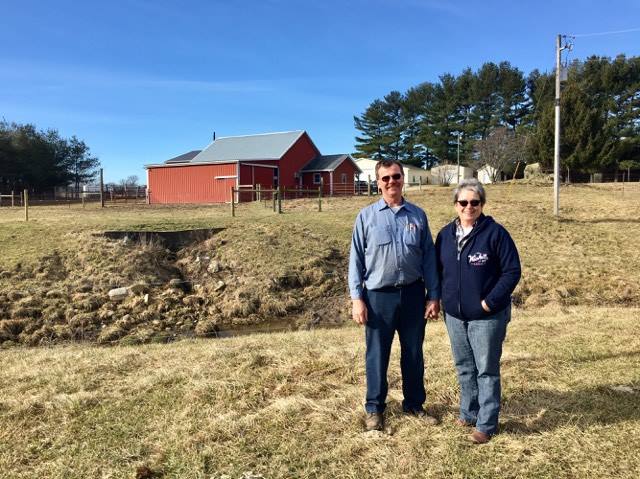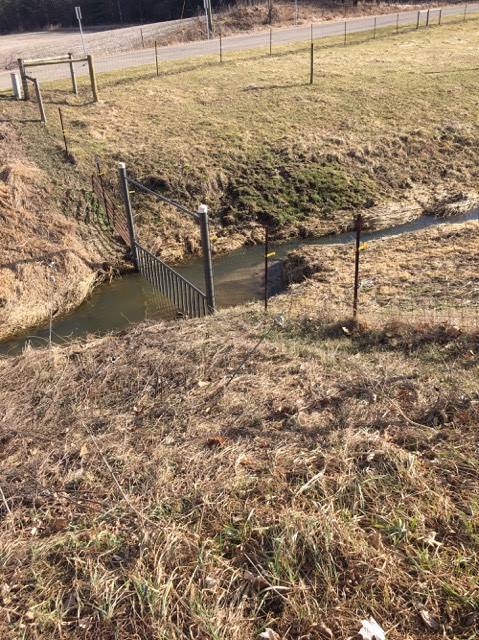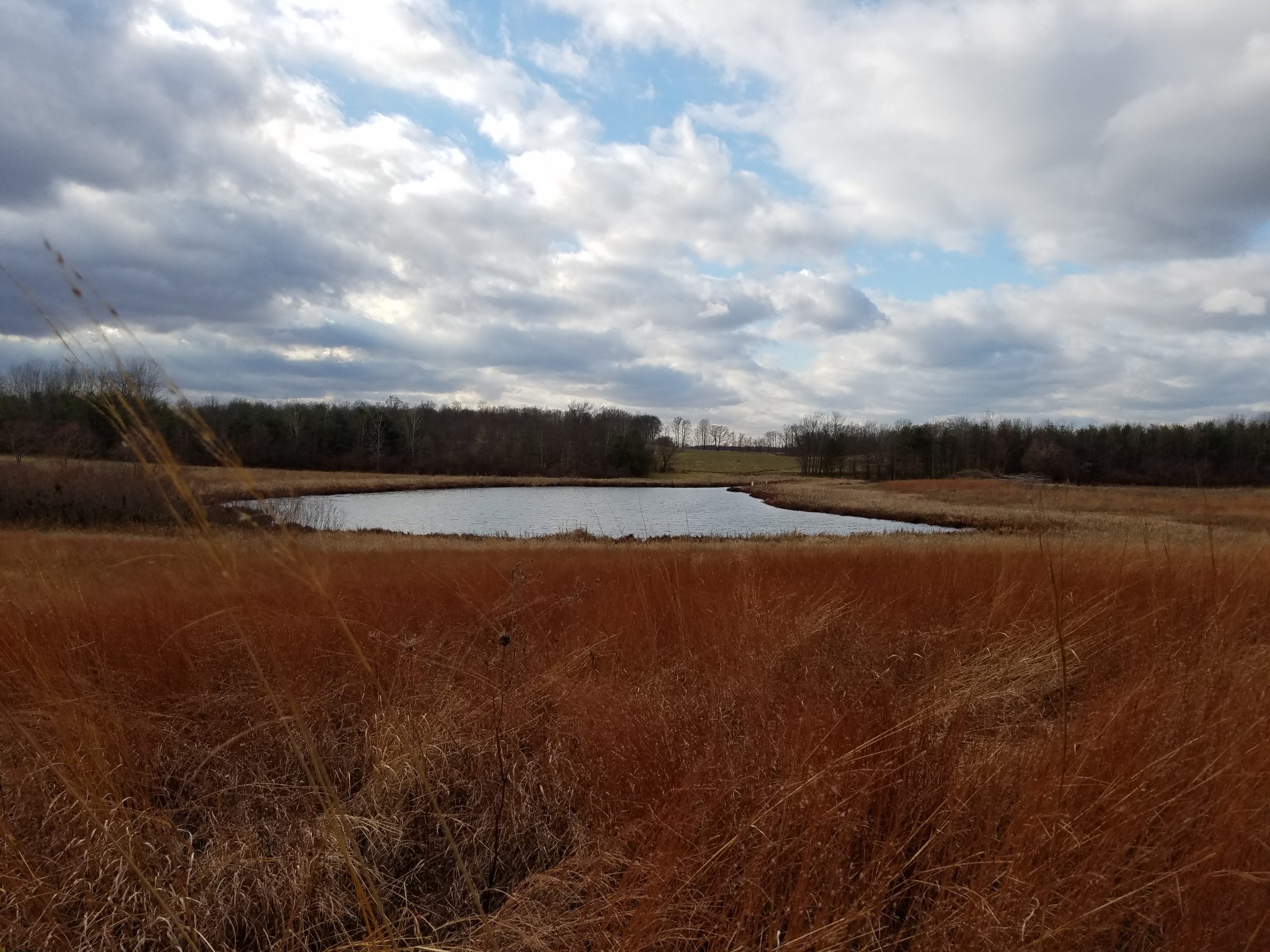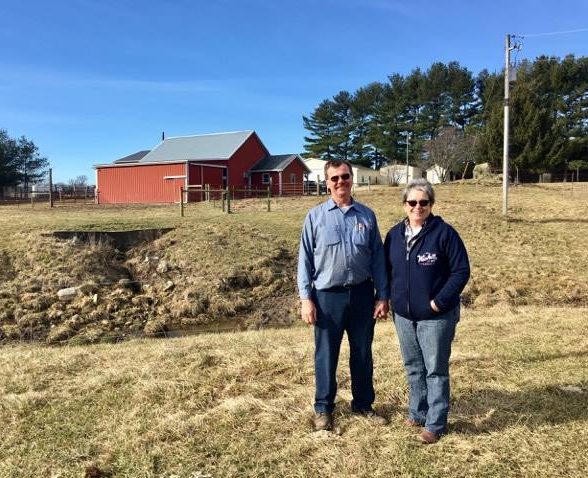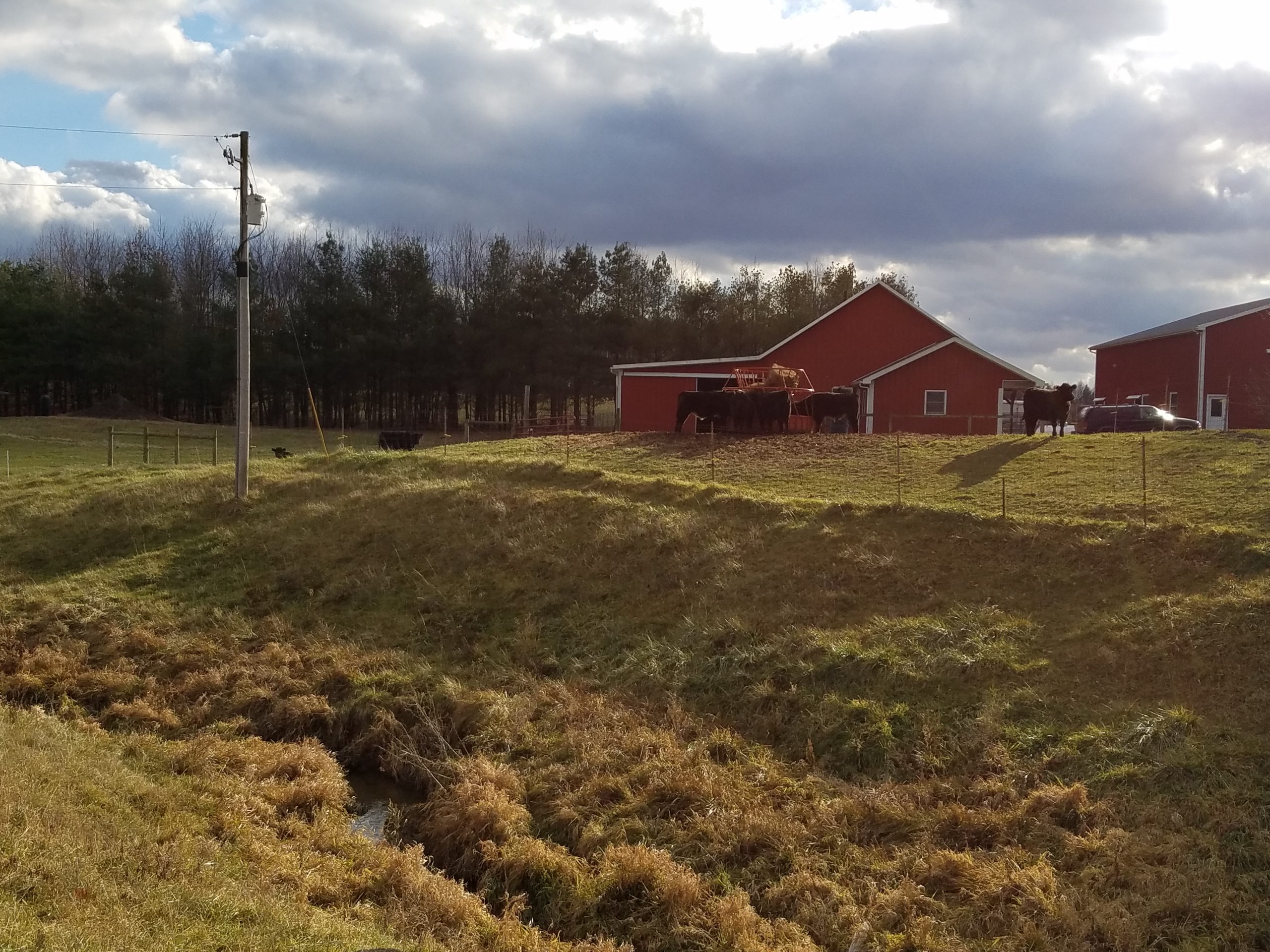7,590
4,064
Partners: The Watershed Foundation, Indiana Deparment of Enviromental ManagementAbout this project
Dale and Nedra Wilcoxson enjoy working with their small cow/calf heard on their farm southeast of Pierceton. As the heard expanded the 4 acres of pasture that lays adjacent to Deed’s Creek near its headwaters was inadequate to provide enough forage and the Wilcoxsons were concerned that the cows had access to the stream and the potential for water quality contamination that existed.
In the spring of 2016 Dale and Nedra began working with Chad Schotter, NRCS District Conservationist and Sam St.Clair, TWF Watershed Conservationist, to implement a plan to plant more pasture and hay land, exclude the cows from Deed’s Creek by fencing, and improve the pasture quality by fertilization and the use of rotational grazing. In addition to these practices a new watering system that provides well water to a series of paddocks for more intensive grazing is now being installed by the Wilcoxson’s .
The result of this new intensive grazing system will be that the cows should have more weight gain and be healthier while water quality contamination is reduced or eliminated in Deed’s Creek . Deeds Creek flows from the Wilcoxson farm westward through the town of Pierceton and then meanders to where it enters Pike Lake at Warsaw then after flowing through the lake it heads westward to its confluence with the Tippecanoe River.
The Watershed Foundation (TWF) was able to assist with some cost share assistance on this project to provide an extra incentive for water quality protection in the watershed. Lyn Crighton TWF Executive Director said “ we know that any water quality protection project in our watershed big or small and even those that occur many miles from our lakes or our river are critical to protecting and improving our water quality” We compliment the Wilxoxson’s for their interest in water quality protection and their willingness to make improvements that will help.
Dale and Niedra Wilcoxson run a small beef cattle operation in Kosciusko County. On their 70-acre property, the Wilcoxsons have 24 acres of rotationally grazed pasture, 10 acres of hay, and 36 acres of protected forest, prairie and wetland habitat.
“We try to be good stewards of the land” and look out for the bottom line, Dale said.
Most of the land was enrolled in the conservation reserve program (CRP) when the Wilcoxsons purchased it in 2002. When the CRP contract ended in 2005, they had planned to pull out and use the land to graze more cattle.
The Farm Service Agency approached the Wilcoxson’s with a deal to keep most of the acres in CRP to protect the forest and wetland areas and a buffer strip that protects a ditch near the cattle lot. The proposed price was more than double what the Wilcoxsons could have made grazing cattle, so they agreed.
They removed 24 acres for pasture and re-enrolled the rest to protect the wildlife habitat areas.
After decades in CRP, the newly-converted grazing land had rich soil. A soil test showed that the land needed hardly any amendments to make it ready for planting.
At the same time, wildlife organizations including Pheasants Forever and Ducks Unlimited helped pay for native grass seed to plant a prairie around the wetland. Scott Fetters, an agent from the Fish and Wildlife service, helps maintain it.
The prairie helps protect birds and other wildlife in the area, which is a big benefit for the Wilcoxsons. “It was a win-win for us,” Niedra said. “We got paid to do something we love.”
Dale and Niedra enjoy birdwatching, hunting and foraging in the forested areas. “We see turkey, we see deer, we hunt mushrooms,” Dale said.
For all the benefits, having land in CRP decreases the Wilcoxson’s property value. If they were looking to sell, a buyer interested in farming might hesitate, knowing that he or she would have to stay in the contract until it ends or pay to cancel it.
But the Wilcoxsons are happy with their investments.
“The better the farmer takes care of the land, the better the land takes care of the farmer,” Dale said.
